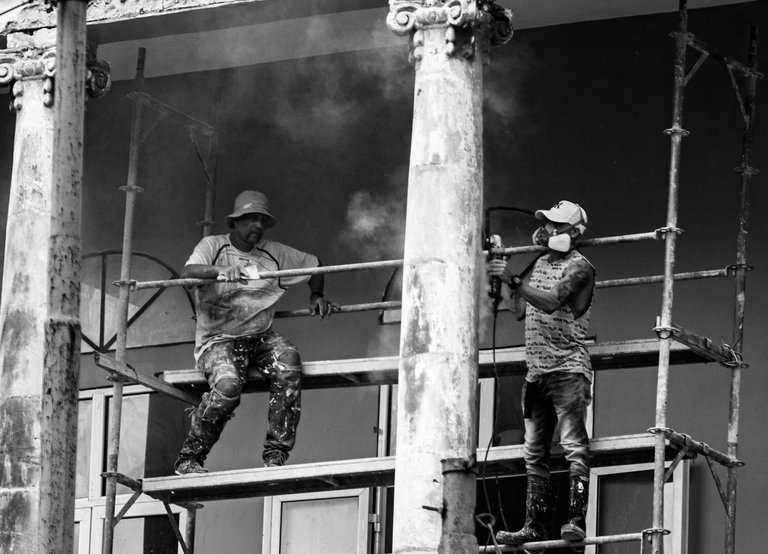These photographs were born from walking through Havana with open eyes and the patience of someone who understands that visual truth cannot be forced; it must be found. I shot them with a Canon 5D Mark III and two lenses that shape the way you see: a Pentacon 29mm f/2.8 and a Praktica 135mm f/2.8.
The Pentacon is both beautiful and temperamental. Wide open at f/2.8 it distorts the edges, bends lines and ruins any attempt at clean geometry. That’s why I use it at f/8: that’s where it calms down, stops twisting reality, and allows me to capture the worn architecture of Centro Habana and Vedado as it truly is; without artificial corrections or cosmetic honesty.
The Praktica, on the other hand, gives me compression, separation, and a dry, unforgiving sharpness; perfect for isolating gestures and moments from a distance. That contrast; one wide and chaotic, the other precise and detached; mirrors the tension and harshness of life in these streets.
These scenes were taken in neighborhoods where reality doesn’t need explanation; it imposes itself. Streets with garbage that has been sitting for days, façades devoured by time, corners where necessity replaces order. And still, life keeps moving: people walk, work, improvise, endure. Not because of romantic hope, but because there is no alternative.
I chose to present this series in black and white because color becomes a distraction here. Stripping it away leaves the city exposed, defined by its harsh shadows, deep cracks, and accumulated exhaustion. I’m not interested in beautifying decay; falling into that seductive documentary aesthetic that turns poverty into a postcard.
What you see is what it is. Nothing more, nothing less.
Technically, I chose honesty as well. I didn’t straighten what was crooked. I didn’t soften the textures of the walls or the harshness of the light. I didn’t correct what, in essence, reflects the truth of the environment. Documentary photography loses its purpose when it becomes makeup.
And this brings me to my intention as a photographer: I want the world to see the world the way I see it. I’m not trying to impose a way of thinking, or push anyone toward a conclusion. My commitment is to my vision, and my vision is honest. I express myself through it because it’s the most sincere tool I have.
If my images provoke reflection, discomfort, or empathy, then they have done their job.
This series is not a judgment.
It is a testimony. And it is my way of leaving a record.









